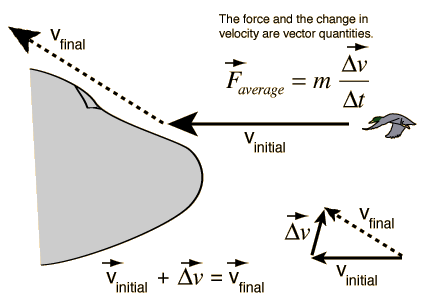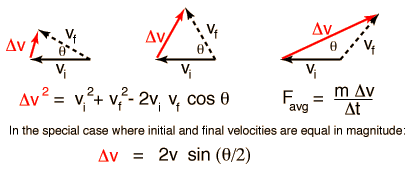Force of Glancing Blow
The force of collision between an airliner and a duck can be diminished greatly if the duck bounces off. The impact force is given by:

The impact force is reduced by the fact that the change in velocity is much less for the glancing blow. The vector addition which gives the final velocity shows that for a small angle deflection, the velocity change is small. The change in velocity may be calculated using the law of cosines. In the elastic case where initial and final speeds are equal, the half-angle formula may be used to obtain a simplified expression.
 | Note that the impact force is not always less for a glancing blow. If the deflection angle is greater than 60 degrees, the impact force will be greater than that for a head-on inelastic collision. |
Calculate for inelastic case
| Minimizing impact force | Airplane and duck collision | Big truck, small truck collision |
Collision concepts